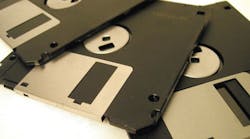In an online piece in The Atlantic (see “A Warehouse Fire of Digital Memories”), Adam Chandler writes about an event of the American Association for the Advancement of Science, during which Internet pioneer Vint Cerf “warned of a ‘forgotten generation, or even a forgotten century’ that awaits us when ‘bit rot’ takes hold and our digital material gets lapped by the new hardware and software racing around it.”
Cerf said in an interview with the Guardian, “We are nonchalantly throwing all of our data into what could become an information black hole. We digitize things because we think we will preserve them, but what we don’t understand is that unless we take other steps, those digital versions may not be any better, and may even be worse, than the artifacts that we digitized. If there are photos you really care about, print them out.”
Nice thought, but, alas, too late. I’ve been writing for publications since 1966, and the only thing that’s archived are the descriptions of physics demonstration experiments I wrote back then for RPI Professor Harry Meiners. Those got printed in books (Physics Demonstration Experiments, Volumes 1 and 2).
Not that there are a lot of people who want to know how to build an analog X-Y plotter attachment for an overhead projector out of war-surplus servo motors, but you never know what new idea might make somebody think of some day.
That’s my palimpsest theory. In ancient times, thrifty people reused old manuscripts by scraping them clean and writing new stuff on them. That’s like Cerf’s reference to old digital media. Happily, with old palimpsests, it’s possible, with extreme care, to read back past later writers’ scratchings to get to the valuable old stuff. That doesn’t work so well with reused floppies, and even if it turns out to be possible to extract real information from a few magnetic domains here and there, where is that old media? It takes some truly dedicated pack rats to hang on to all those old floppies and back-up tape drives. And even then, how long is magnetic media good for?
So, going forward, is the cloud the answer? Cerf apparently doesn’t think so. I think he’d agree that, no matter how much redundancy we build in, we are at the mercy of entropy, which isn’t noted for showing much mercy.
Cerf does give us a clue, though. “If there are photos you really care about, print them out,” he said. The key word there is “you.” The reason we still have pre-media classics like the Iliad or Táin Bó Cúailnge is that somebody cared enough to learn them and pass them on to others. That’s what Professor Meiners did at RPI. He taught the basics to generations of engineers, who are today passing that on to new generations. Harry is no longer with us, and those books--well, most of their contents are obsolete. But the people who care, and use whatever media the zeitgeist provides them to fight entropy and pass on the information, not the media, are the ones we need to keep moving forward.

